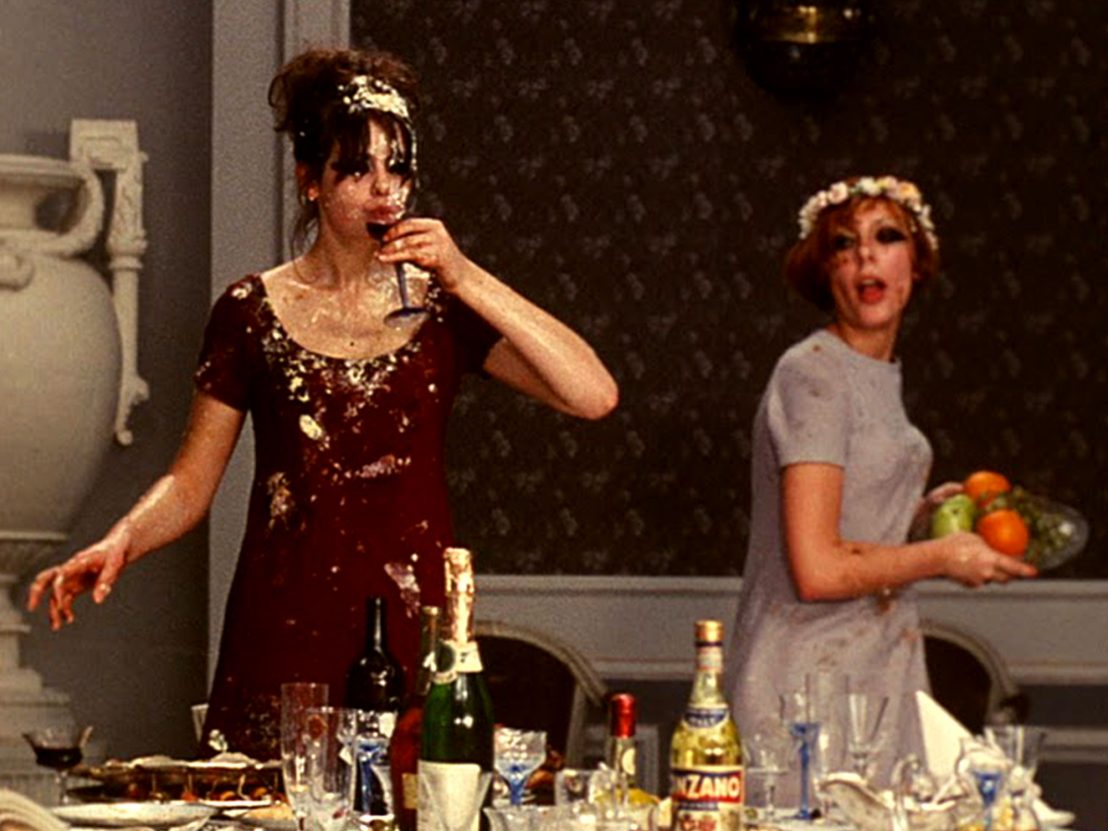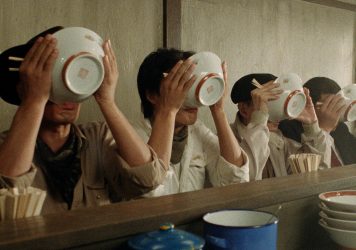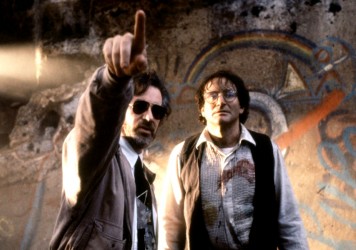
Desert of choice for Americans everywhere, the pie is a beloved icon of home cooking: half pastry, half fruit with a sprinkling sugar, it’s a thing to be cherished, lovingly set on a windowsill to cool or smothered in whipped cream and immediately devoured. A pie should never, ever be thrown at someone – unless it’s for good reason.
Pieing – the act of chucking a pie in someone’s face – is traditionally done with a crustless variety filled with cream, although shaving foam packed into a tinfoil tray may be used as a substitute. The goal is to humiliate the victim and amuse the audience, except when a political figure is involved, in which case the attack moves into the realm of protest: an unsolicited pie to the face is a punishable criminal offence.
Pieing has long been a mainstay of American slapstick. The earliest example record on film is Essanay Studios’ 1909 silent comedy Mr Flip, in which a sexually harassed waitress finally smashes a pie in Ben Turpin’s face as just punishment for his unsolicited gropings. Twelve years later, comedy duo Laurel and Hardy set the benchmark with a carefully choreographed 3000-strong pie fight for their slapstick splatterfest The Battle of the Century. The fight escalates after a pastry chef slips on a banana peel and articulates his frustration in the best possible way.
Pieing has since gone on to become a stock comedy punchline. It makes for wholesome family viewing, but it fast became something of a cliché, a warm up act to a full-blown food fight, which has the potential to say more than a simple pie ever could.
Take John Landis’ Animal House, which follows a group of bawdy, socially-inept students in a battle against the college’s most prestigious fraternity. Bluto (John Belushi) sits down to lunch with the jocks, fills his mouth with ice cream, punches his swollen cheeks and proceeds to spray the contents over his fellow diners. He then yells those two words and the hall explodes into chaos. This food fight is a swift and effective expression of contempt for conformity – a simple pie in the face would have been too personal, and much too silly.
Food can also be a weapon. In Danny DeVito’s Matilda, the oppressed children of Miss Trunchbull’s school rise up and humiliate their tormentor using their lunch. And in Alan Parker’s prohibition gangster film Bugsy Malone, the cream in the ‘splurge guns’ was never intended for eating, it was a genius alternative to bullets in the director’s bid to securing the film its child-friendly rating.
At the other end of the scale, an understated food fight in 1931’s The Public Enemy is a lesson in simplicity: Kitty (Mae Clarke) receives a grapefruit half to the face when she tells James Cagney’s Tom he can’t drink alcohol with his breakfast. His retaliation is so sharp and so unreasonable that it surpasses Laurel and Hardy’s pie fight in terms of emotional impact: a humiliated Kitty left alone at the table makes for sober viewing.
Moving into the realm of sexual metaphor, the two female protagonists of Jon Avnet’s Fried Green Tomatoes throw and smear flour, ripe blackberries and chocolate over each other in a reckless food fight which effectively stands in for illicit sexual contact. This food fight is at once both an act of subversion and conformity as their desire finds expression in an unconventional, yet culturally acceptable act.
Food fights have become a familiar staple of American cinema. But in communist Europe, where food was scarce and wastage frowned upon, filming one had the potential to become an act of rebellion dangerous enough to see the film banned, or worse, a filming ban for the director themselves.
Vera Chytilová, a key figure in the Czech New Wave, directed her 1966 film Daisies under a strict socialist regime. Not that she conforms to her nation’s frugal ideologies: her fifth feature tells the story of two dangerously bored pals who blaze through a series of abstract scenarios, playfully trashing their environment to create choppy visual experiments. They finally break into a state banquet hall, discover a table laden with food and proceed to rip, smash, chuck and gobble everything in sight.
Unsurprisingly, the film’s wasteful indulgence irked the buttoned-up authorities, who banned it for its depiction of food wastage and general nonconformity. The punishment was sharp – not only was the film itself prohibited, but Chytilová was forbidden from making films in her native country for almost a decade.
Moving deeper into arthouse territory – and about as far away from a wholesome pie fight as you can get – is Yugoslavian director Dušan Makavejev’s Sweet Movie. Already exiled from his home country following his controversial fourth feature WR: Mysteries of the Organism, his fifth was immediately banned and remains barred, or heavily cut, in many countries to this day.
In this stomach-churning feast, a table of diners sink into ungoverned chaos, smashing food, spitting it out and literally regurgitating it onto the table. The shock is the point: Sweet Movie aims to push ideas about creative and individual freedom to their limits. As Makavejev later claimed in a 1975 interview with film critic Roger Ebert: “That’s what I’d like my films to do – to bring people to see in themselves things they might otherwise never accept.”
Food fights have the power to amuse, humiliate, relieve tension, or – in certain cultural environments – evolve into a potent artistic or politically-charged statement. Even a simple pie, when thrown in the face of the right person, in just the right way, can communicate a message far more effectively than words ever could. As Stan Laurel once put it: “It wasn’t just that we threw hundreds of pies. That wouldn’t have been very funny… we went at it, strange as it may sound, psychologically. We made every one of the pies count.”
Published 7 Aug 2018

By Anton Bitel
Juzo Itami’s ‘ramen western’ Tampopo – finally out on Blu-ray – is a culinary romp like no other.

By James Clarke
Does the director’s take on JM Barrie’s classic tale of arrested development deserve its reputation?

Inspired by The Shape of Water, we survey the various ways female self-pleasure has been portrayed.